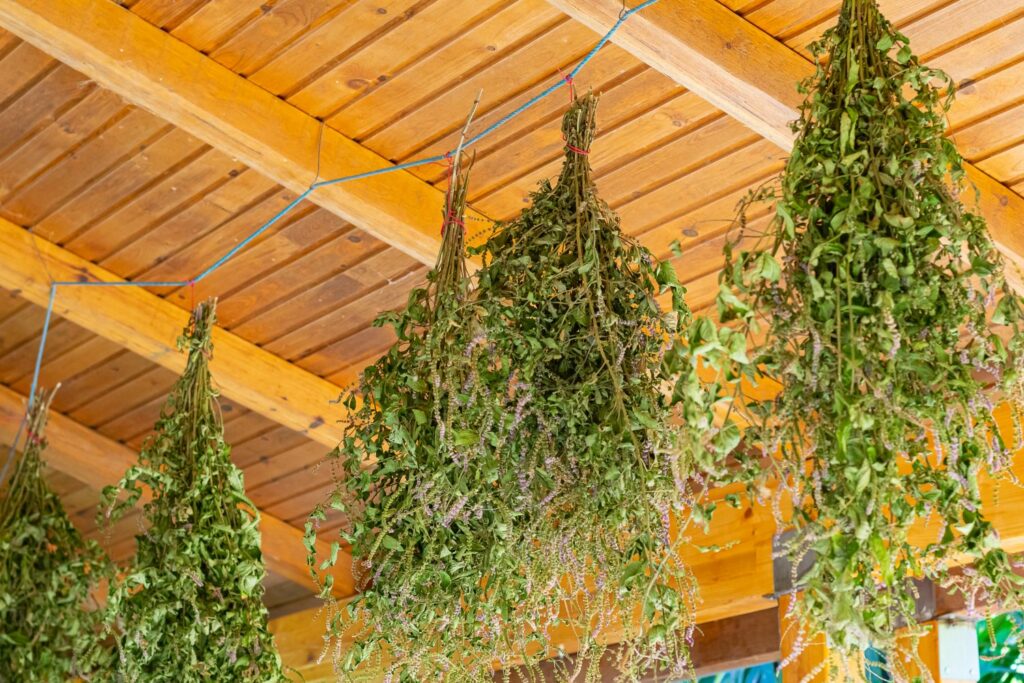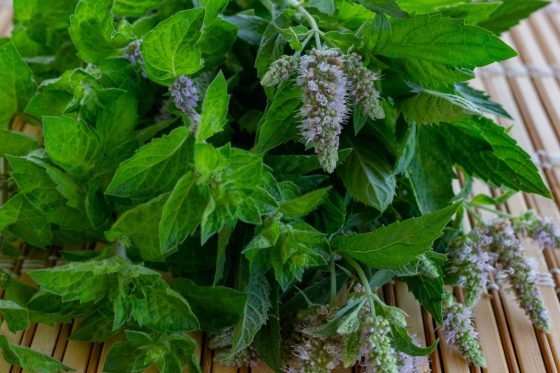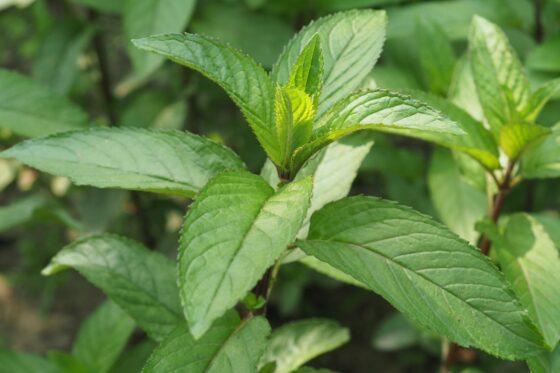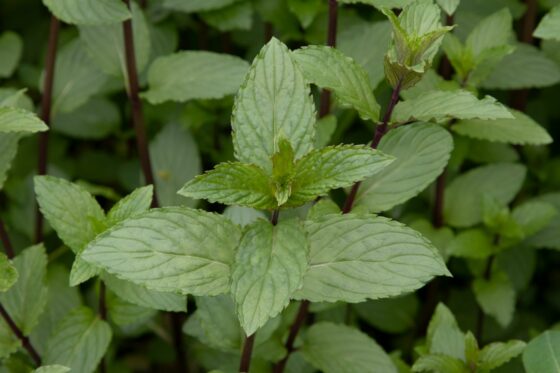Drying, freezing & preserving peppermint leaves
Peppermint is easy to preserve, so its aromatic and refreshing taste can be enjoyed even in winter. Find out how to dry, freeze and preserve peppermint leaves successfully, as well as some helpful tips.

Peppermint is beloved in drinks for its menthol flavour. In summer, refreshing drinks are often jazzed up with fresh leaves, while in winter, peppermint tea is a favourite beverage that is easy to make from home-dried peppermint leaves. Discover what to look out for when preserving peppermint (Mentha x piperita).
Drying peppermint
Drying peppermint leaves is the best way to preserve them. The herbs are gently dried after harvesting. Tie the peppermint stems into a bunch and hang upside down in an airy, warm, dark place. Hang or label the bouquets by variety to distinguish the nuanced flavour differences of the sometimes very fruity mint types and varieties. Avoid direct sunlight, otherwise you risk losing a lot of the aromas and essential oils in the herbs.
Alternatively, dry the peppermint in a mesh drying rack with ample air circulation. Another option is to dry peppermint stems in the oven at a maximum of 40 °C. Keep the oven door slightly ajar to allow moisture to escape. Remove the dried leaves off the stem and store in dark, airtight jars. Properly dried peppermint leaves retain a greenish colour and rustle and crumble when pinched between your fingers. Dried peppermint leaves can be kept for a few months but will lose their flavour and nutrients over time.

Tip: Dried peppermint leaves are not only delightful in tea, but they also make a delicious seasoning for cooking.
Freezing peppermint
A good alternative to drying is to freeze your peppermint leaves. To prepare, carefully wash the stems and pat them dry with a tea towel. Here, there are two possibilities:
- Freeze the peppermint whole: Place the stems on a tray next to each other and pre-freeze for 1-2 hours to prevent the leaves from sticking together. Then put them in labelled airtight bags or containers. The frozen leaves separate easily from the stem and can be used frozen or thawed.
- Finely chop the peppermint and freeze: Finely chop the individual mint leaves and place them into ice cube trays. This way you will have pre-portioned herbs ready to use whenever you need them. Once the peppermint cubes are completely frozen, transfer them to bags or containers.

More tips for preserving and storing peppermint
Ice cubes with whole peppermint leaves are a delicious addition to soft drinks and cocktails. Fill an ice cube tray with water as usual and put a mint leaf or shoot tip into each cube and freeze. If you want to use fresh peppermint, you can keep it in the fridge for a few weeks. Line a plastic container with damp kitchen towels, place the peppermint on them and cover with another layer of damp towels. Pop on the lid and keep in the fridge. Another alternative is to place the peppermint stems in a glass of fresh water for a few days.
Peppermint is very low maintenance and easy to grow. Find out how to grow peppermint to ensure a bountiful harvest.
























